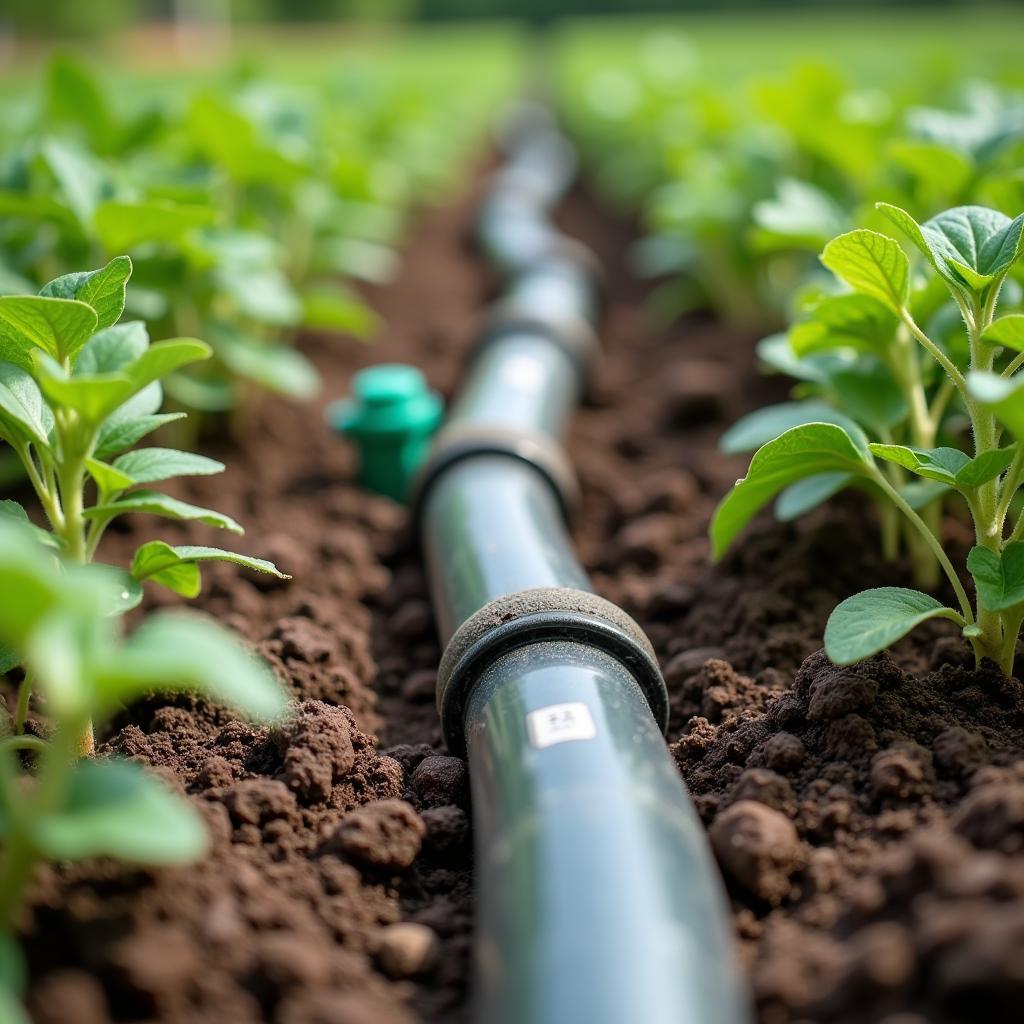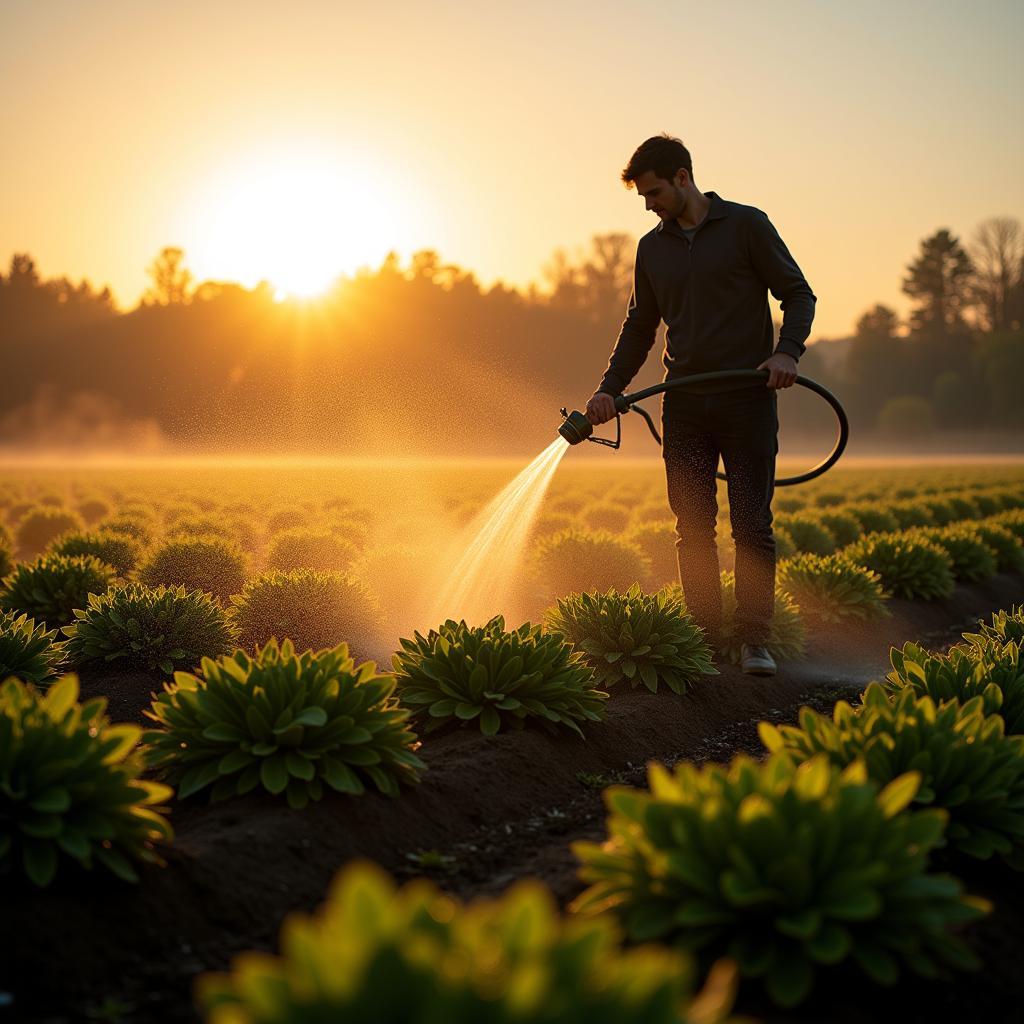Knowing How To Water A Food Plot effectively is crucial for its success, especially during dry periods. Proper watering techniques ensure healthy plant growth, attracting wildlife and maximizing your investment. This guide will explore various methods for irrigating your food plot, from simple solutions to more advanced systems, helping you choose the best approach for your specific needs.
Choosing the Right Watering Method for Your Food Plot
Several factors influence the ideal watering method for your food plot, including its size, location, budget, and available water sources. Smaller plots might benefit from manual watering or a simple soaker hose system, while larger areas may require more sophisticated setups like sprinkler systems or drip irrigation. Consider the terrain as well. A sloped plot will require a different approach than a flat one to prevent runoff and ensure even distribution of water. If you’re dealing with limited rainfall, exploring options like how to water food plots with no rain becomes even more critical.
Utilizing Rainwater Harvesting Techniques
Collecting rainwater offers an eco-friendly and cost-effective solution for watering your food plot. Setting up rain barrels connected to downspouts can provide a substantial amount of water, especially during periods of heavier rainfall. This collected water can then be used to supplement other watering methods, reducing your reliance on other water sources.
Understanding Your Food Plot’s Water Needs
Different plant species have varying water requirements. Research the specific needs of the plants in your food plot to determine the appropriate watering frequency and amount. Overwatering can be just as detrimental as underwatering, leading to root rot and other issues. Pay attention to the soil moisture. A simple finger test can help you gauge whether the soil is dry enough to warrant watering.
Signs of Underwatering and Overwatering
Recognizing the signs of both underwatering and overwatering is key to maintaining a healthy food plot. Wilting leaves, stunted growth, and dry soil are indicators of underwatering. On the other hand, yellowing leaves, soggy soil, and the presence of fungus can signify overwatering.
Exploring Different Irrigation Systems
 Drip irrigation system in a food plot
Drip irrigation system in a food plot
From simple soaker hoses to more complex sprinkler systems, various irrigation systems can cater to different food plot needs and budgets. Soaker hoses provide a slow and steady release of water directly to the soil, minimizing evaporation. Sprinkler systems offer broader coverage but can be less efficient if not carefully managed. A good food plot irrigation system can significantly impact the success of your plot. For those looking to establish their food plot, understanding the best food plot seeder is also essential.
Drip Irrigation for Targeted Watering
Drip irrigation delivers water directly to the plant roots through a network of tubes and emitters. This method is highly efficient, minimizing water waste and promoting optimal growth, especially in arid climates. While it requires a higher initial investment, the long-term benefits in terms of water conservation and plant health can be significant.
“Choosing the right watering method depends on several factors, including the size and location of the food plot, available water sources, and budget,” says John Smith, a wildlife biologist with over 20 years of experience.
Timing Your Watering Schedule
 Watering a food plot in the early morning
Watering a food plot in the early morning
Watering your food plot during the cooler parts of the day, such as early morning or late evening, reduces water loss due to evaporation. Avoid watering during the hottest part of the day, as this can lead to scalding of the leaves. “Watering in the early morning allows the plants to absorb the moisture before the heat of the day sets in, promoting healthy growth and preventing fungal diseases,” adds Jane Doe, a seasoned horticulturalist specializing in native plant cultivation.
Using a biologic food plot mix can enhance the overall health and resilience of your plot, making it more resistant to environmental stressors. If your plot is in a shaded area, selecting the best food plot for shaded areas will be vital for its success.
In conclusion, how to water a food plot effectively involves understanding your plants’ needs, choosing the right watering method, and timing your watering schedule appropriately. By implementing these strategies, you can ensure a thriving food plot that attracts wildlife and provides a valuable food source.
FAQ
- How often should I water my food plot?
- What are the signs of underwatering?
- What are the signs of overwatering?
- What is the best irrigation system for a small food plot?
- How can I conserve water when watering my food plot?
- Is drip irrigation worth the investment?
- What’s the best time of day to water a food plot?
Need help with your food plot? Contact us! Phone: 02437655121, Email: minacones@gmail.com Or visit us: 3PGH+8R9, ĐT70A, thôn Trung, Bắc Từ Liêm, Hà Nội, Việt Nam. We have a 24/7 customer service team.